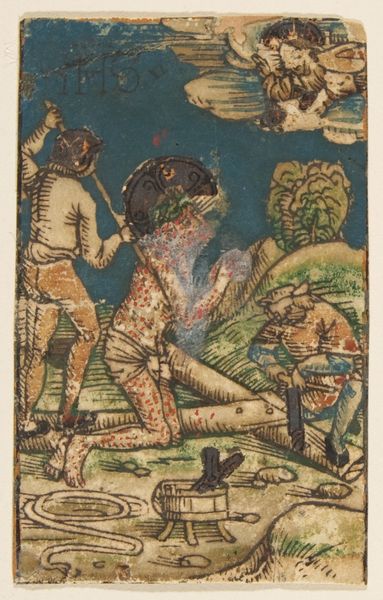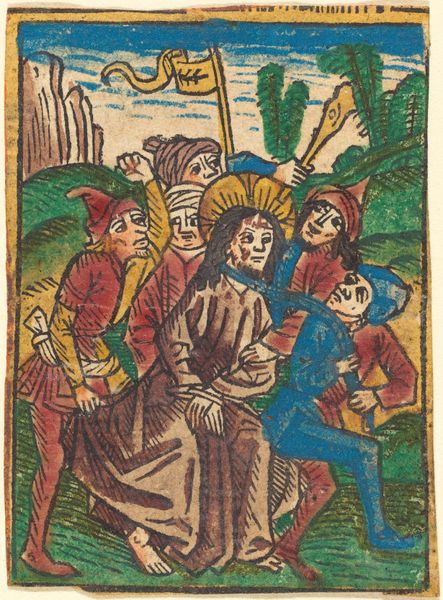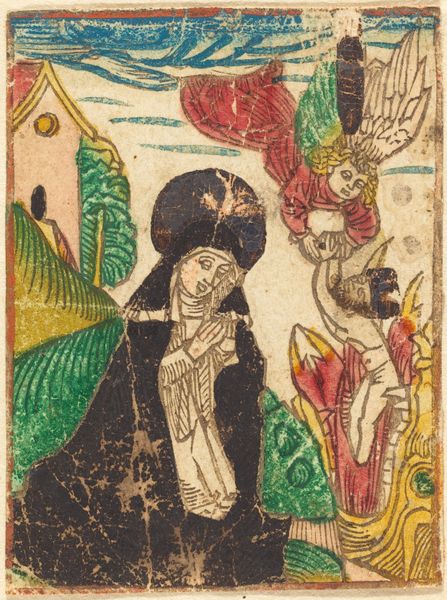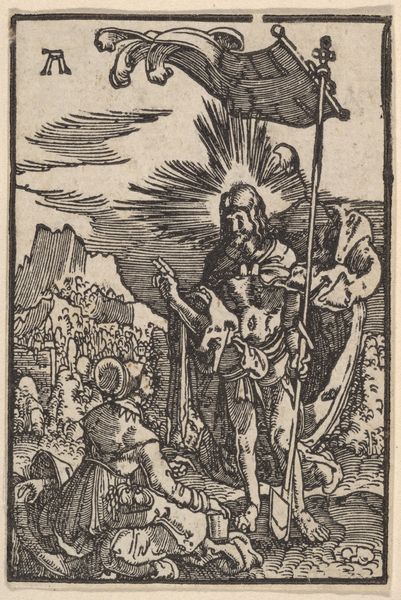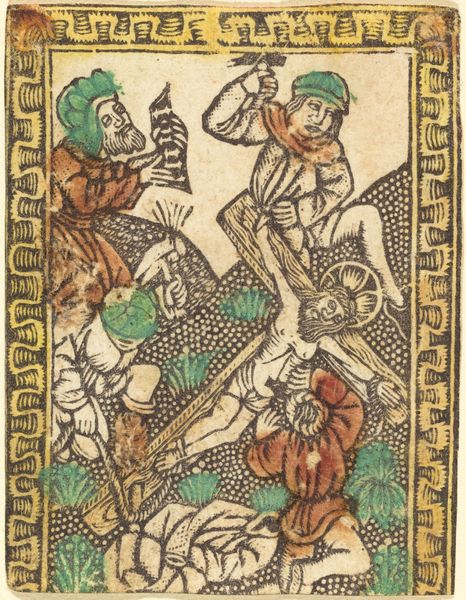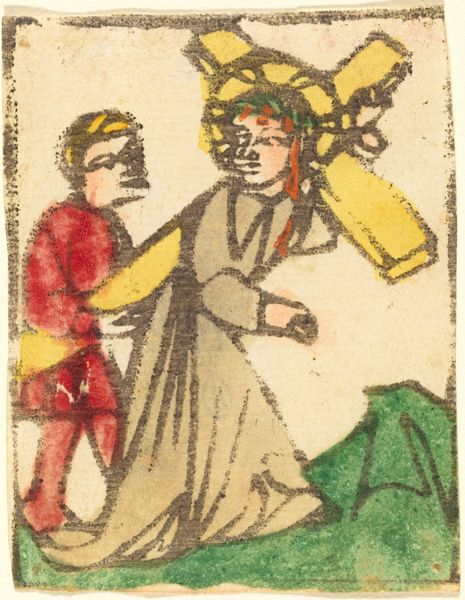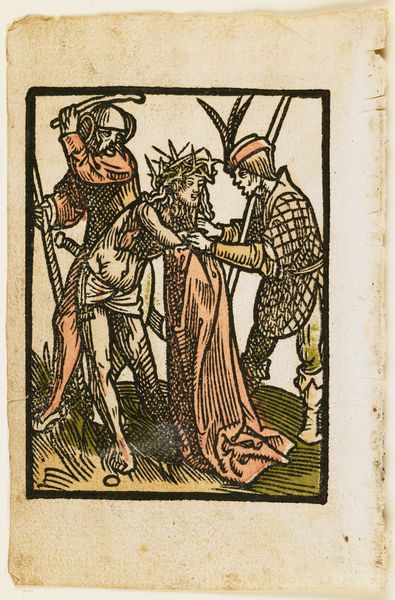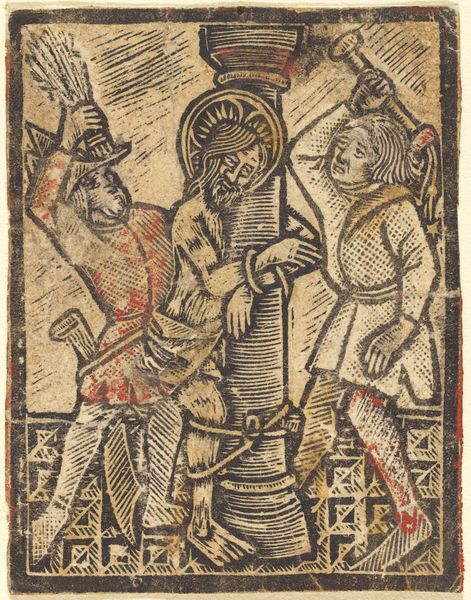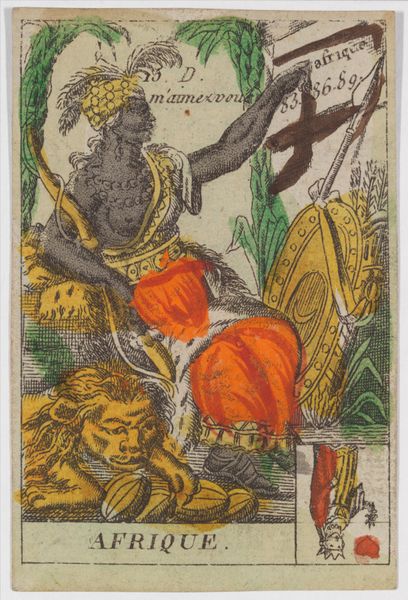
print, woodcut, engraving
#
narrative-art
# print
#
figuration
#
coloured pencil
#
woodcut
#
northern-renaissance
#
engraving
Copyright: National Gallery of Art: CC0 1.0
Curator: Welcome. Before us is the print, "Beheading of Saint Catherine," estimated to have been created between 1480 and 1490 by an anonymous artist. Editor: Oof, that’s grim, isn't it? The colours feel almost… playful, which is deeply unsettling, considering what's happening. Makes you wonder about the artist’s mindset. Curator: Indeed. Note how the artist uses the woodcut medium to depict depth and texture. Observe the stark contrast between the sharp lines defining the executioner and the softer, almost ethereal rendering of Saint Catherine. This visual distinction underscores the power dynamics at play. Editor: It’s like a children’s book gone horribly wrong. I can’t help but focus on her face. She's so still, composed even. Almost… detached? While this beefy guy with his sword prepares to strike her down with an odd gaze that suggests some ambivalence or bewilderment about this task at hand. A third figure floats in the sky at the left of a menacing wheel device. This artist knew how to convey inner turmoil. Curator: The iconography is rich. Catherine's upward gaze, combined with the broken wheel nearby – a symbol of her thwarted torture – signals triumph over earthly suffering. One should also consider the role of this print as devotional material in the late 15th century, particularly how such imagery was designed to inspire faith. Editor: Inspiration through decapitation? Gosh! Art, you really are bizarre sometimes. I suppose that the graphic nature underscores Catherine’s unwavering commitment and offers an uncomfortably visceral invitation for spiritual self-examination. Makes you grateful for a nice cup of tea. Curator: Perhaps. However, to appreciate the symbolic depth of this historical engraving involves seeing beyond the immediate horror to deciphering its codified spiritual language. It exemplifies the symbolic structure of early Northern Renaissance Art and culture. Editor: A grim little meditation on belief, resistance, and what we're willing to die for... Still, can’t help feeling sorry for that wheel contraption that had to be rebuilt after Saint Catherine took it apart with a gesture... The little details really haunt you, eh? Curator: Yes. Thank you. A poignant summary, indeed.
Comments
No comments
Be the first to comment and join the conversation on the ultimate creative platform.
